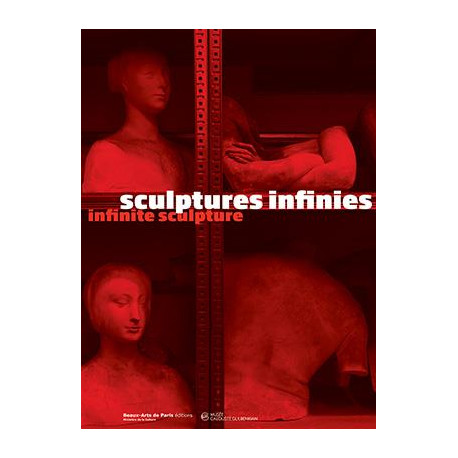No products
Product successfully added to your shopping cart
There are 0 items in your cart. There is 1 item in your cart.
Our webstore uses cookies to offer a better user experience and we consider that you are accepting their use if you keep browsing the website.

Exhibition catalogue
- New Art Books
- Exhibition catalogue
- Highlights
- Art Book Sale
- Museum's Shop & Gifts
- Bilingual art books and foreign editions
- Children's Books
- Art History
- Painting
- Architecture
- Sculpture
- Drawing & Engraving
- Photography
- Contemporary art
- Decorative Arts & Design
- Art Techniques
- Critics
- Entertainment art books
- Civilisations
- Partners Reviews
Infinite Sculptures
Over the past decade there has been a renewed interest in the practice of casting, which once again brings together the artistic and industrial worlds. Casting in plaster has never gone away, but the repertoire has now been enlarged.
| Model | 9782840566854 |
| Artist | Sculpture |
| Author | Penelope Curtis, Rita Fabiana, Thierry Leviez, Armelle Pradalier |
| Publisher | ENSBA |
| Format | Ouvrage broché |
| Number of pages | 174 |
| Language | Bilingue Français / English |
| Dimensions | 270 x 200 |
| Published | 2020 |
| Museum | Palais des Beaux-Arts, ENSBA, Paris |
Exhibition Catalogue Infinite Sculptures, from the antique cast to the 3D scan, presented at Palais des Beaux-Arts, ENSBA, Paris (4 dec. 2019 - 16 feb. 2020).
Casts of all kinds proliferate in our daily lives, and artists avail themselves of newly available digital techniques and artificial materials. Casts embody the special but unseen quality of almost all sculpture: that it is more often serial than unique. Sculpture is inherently plural and casting makes it so.
The artists in this show have been chosen because they are fascinated by casting, and what it allows them to do. For some it is a way of capturing transient life stages; for others a way of immortalising historical events. While some use plaster for its historical associations, others use 3D scans to speak of cloning, surrogacy, and virtual multiplication.
Casting has always been linked to documentation, and still today it gives form to what might not otherwise be known. Artists explore the moulds as much as the images, looking quite literally inside the sculpture itself.
Contemporary works have been placed alongside the historic cast collections of the Fine Art schools of Paris and Lisbon to highlight these continuities. Generations of students have grown up alongside these collections, as interesting for their disordered repetitions as for their original teaching purpose. This exhibition goes beyond iconography to look instead at the infinite possibilities of a technique that has become part of our lives.
Infinite Sculpture is the result of a collaboration between the Beaux-Arts de Paris and the Calouste Gulbenkian Museum. It draws on the historic collections of the Louvre, the Réunion des musées nationaux and Faculdade de Belas Artes in Lisbon. The contemporary works are all on loan.
Recently viewed items








